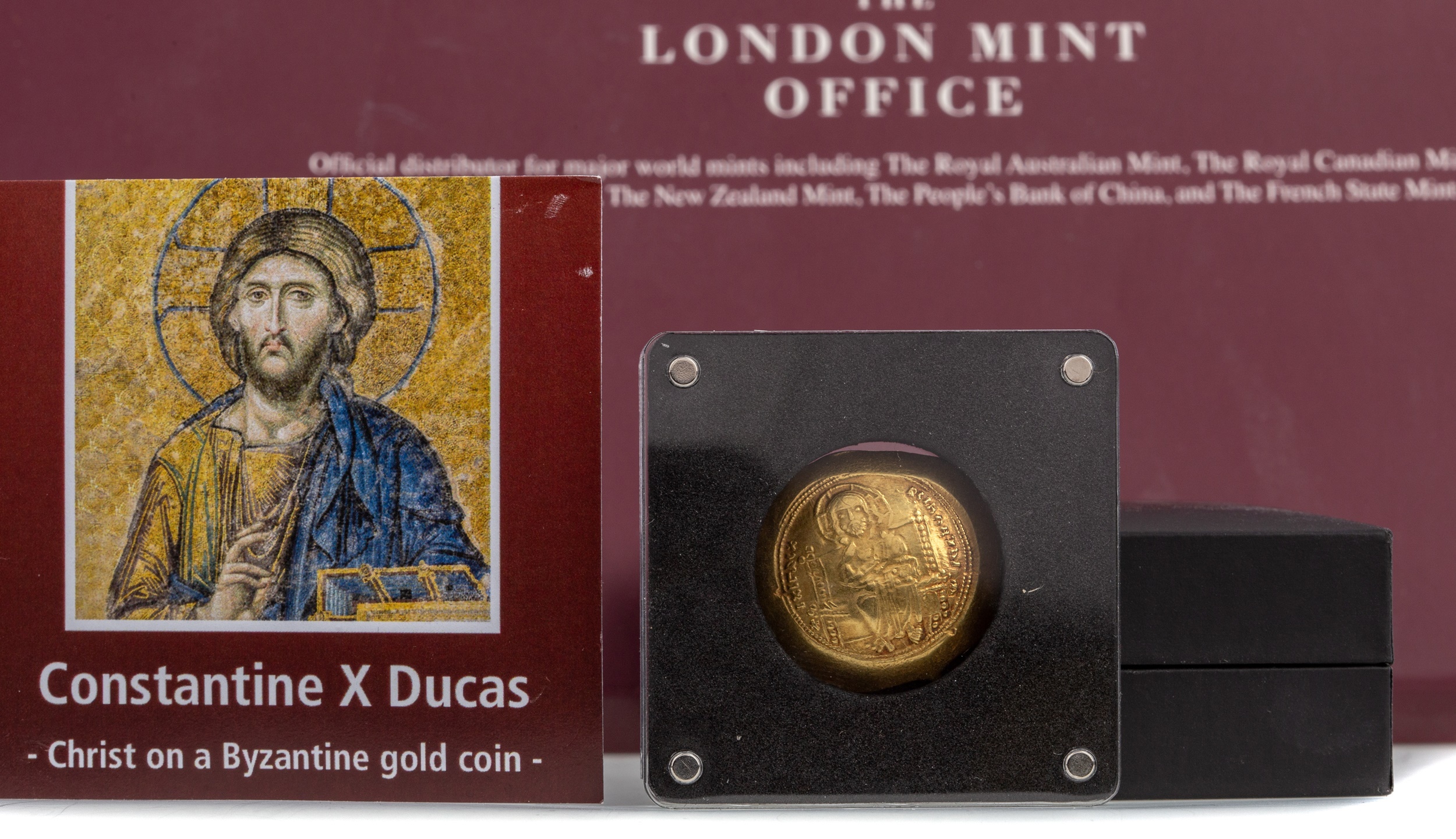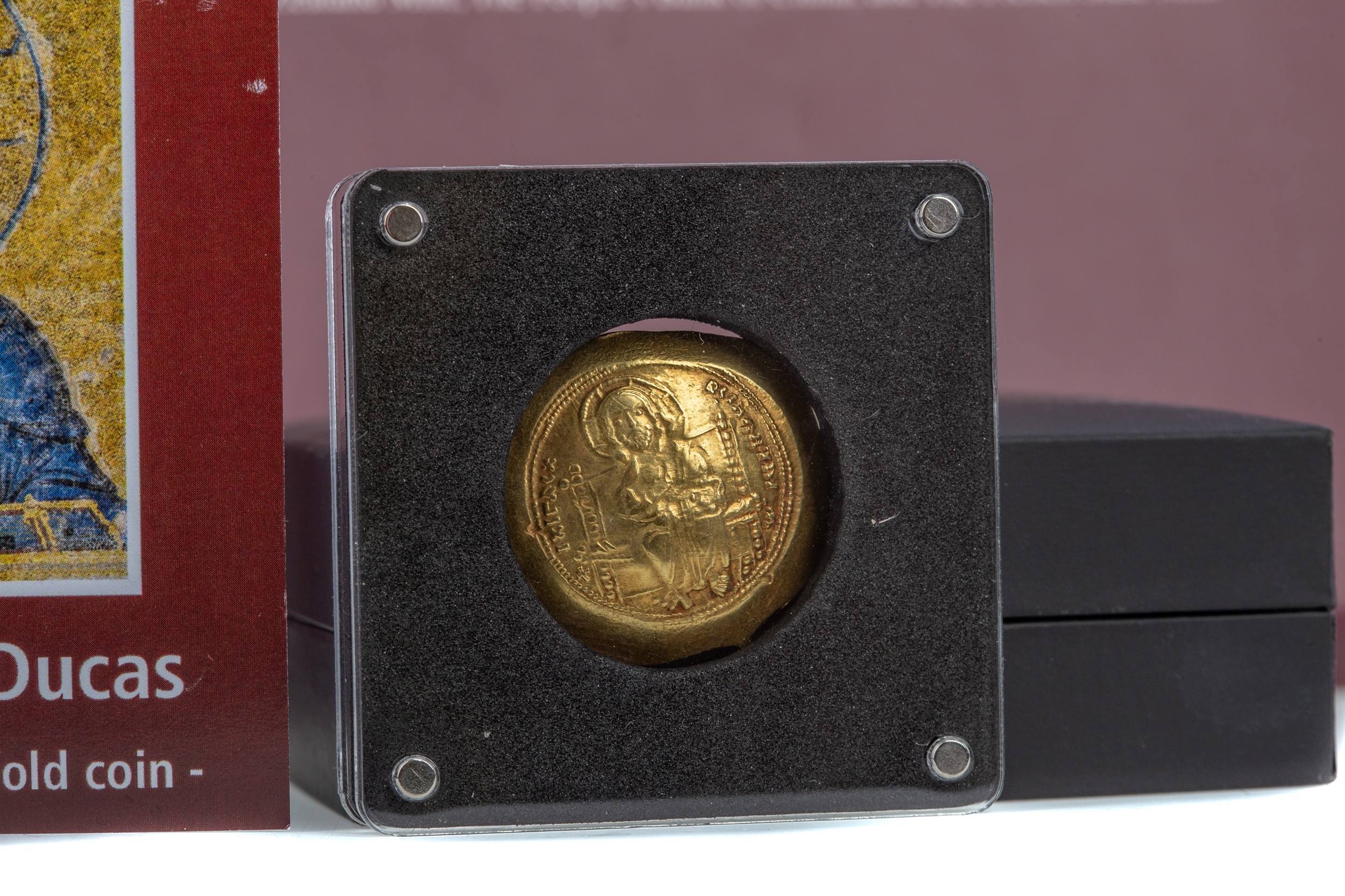Shrouded in Mystery
Gold coins are highly collectible amongst serious numismatists and in the eyes of a passionate collector, the older the coin, the better.
Lot 8 in the 23 February Coins & Banknotes Auction is a phenomenal example of a gold coin which happens to be the earliest gold coin that has come to McTear’s Auctioneers.
Of the Byzantine Empire, this gold ducas was struck under the reign of Emperor Constantine X (1059 – 1067) and one of the unique factors about this coin is its distinctive bowl shaped appearance.
Born in 1006 AD, Constantine X ascended the throne in 1059 through abdication after Isaac I Komnenos but unfortunately, he proved to be incapable of ruling the empire. He was thoroughly disliked by his people as he was responsible for wrecking Byzantine defences by slashing financial support for training the armed forces and disbanded an army of 50,000 men at a time when they were desperately needed. This resulted in raising taxes to pay the army which enraged the people of the empire and in 1061, multiple attempts were made to assassinate him however, illness took over and Constantine died in 1067.
This coin is perhaps one of the most interesting coins to come to auction and it details one of the oldest mysteries in the world.
The reverse design depicts a portrait of Emperor Constantine X himself and the obverse design depicts a portrait of Christ. The Byzantine Empire was among the first to depict a portrait of Christ on coins and originally he was depicted as clean shaven however, in the tenth century, this was replaced with what we now know associate as the oldest and most common religious depiction of Christ.
The incredibly fascinating reason for this is thought to be that in 944AD, a linen cloth arrived in Constantinople which appeared to display a full body imprint of Christ on it, now known as the Shroud of Turin. Legend has it that Jesus’ disciples brought a cloth miraculously printed with his image from Jerusalem to Edessa which was then hidden to keep it safe. Hidden in a stone wall above the city gates, this remained untouched until 525AD when it was rediscovered and pilgrims flocked to see the shroud with their own eyes.
In 943AD, the Byzantine Empire sent by Emperor Romanus arrived in Edessa and agreed to exchange the shroud for high-ranking Muslim prisoners. On the 15th of August 944AD, the cloth arrived in Constantinople however this was considered too holy for public display and only a selected few were invited to view it privately. This means that as the coins of Constantine X’s reign were being struck, the cloth was held and viewed in Constantinople.
In 1204, the French looted and destroyed Constantinople and the cloth was taken to Athens. In 1207, Nicholas d’Orrante, Abbott of Casole and the Papal Legate in Athens wrote about looted relics taken from Constantinople by French knights and he mentions seeing them ‘with our own eyes’. It seems likely that over the next century, the shroud came under the protection of the famous Knights Templar warriors. Legend has it that they guarded the Holy Grail; could they also have guarded the holy burial shroud?
Entries are currently invited for the next auction taking place on 6 April. For a complimentary, no-obligation valuation, contact a specialist on 0141 810 2880 or amy@mctears.co.uk.
What's it worth?
Find out what your items are worth by completing our short valuation form - it's free!


